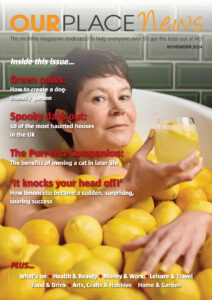The number of older renters has reached record levels across the UK, with over-50s accounting for more than one in 10 rented households in Scotland, according to research.

Figures from the Hamptons International Monthly Lettings Index show that, across Britain, over-50s accounted for a total of 15 per cent of rented households, up from 11 per cent in 2012.
The research also showed that almost one third of this group are pensioners.
Scottish Labour said the index shows that it is not just younger generations who are struggling to get on the property ladder.
Pauline McNeill, the party’s housing spokeswoman, said: “Scotland is facing a housing crisis, and it is an issue not just facing young people.
“Around 40,000 retired adults are now forced to privately rent – eating away at their pension and risking being pushed into poverty.
“That’s why the next Scottish Labour government will introduce a cap on private sector rent increases with a Mary Barbour law and build at least 12,000 new homes for affordable social-rent.
“Only Labour has the radical vision to give Scotland the real change it needs to ensure we have a country that works for the many, not the few.”
The research showed that across the UK, almost 800,000 homes were rented by over-50s – 61 per cent more than in 2012 and 8.2 per cent more than last year.
This means that older generations paid a total of £9.2 billion on rent this year, up from just £5.1 billion in 2012 and £8.5 billion in 2018. Tenants over-50 paid an average of £1000 per month on rent – 3 per cent more than other tenants.
Most older renters live in two bedroom properties (44%) according to the data, with 26% choosing a three bed and 19% living in a one bedroom home.
Almost half (48%) live alone.
Aneisha Beveridge, head of research at Hamptons International, said: “The number of over 50’s renting in Great Britain has reached a record high.
“With younger generations much less likely to be homeowners, tenants are getting older, and an ever more diverse group of people are calling the rented sector home.
“Rising rents in the South drove rental growth in Great Britain in May.
“The South West recorded the strongest rental growth, with rents rising 4.0% year-on-year.
“Wales and the East were the only regions to record small rent falls.”
Across the UK, the average cost of new lets rose to £977 per month, representing a 2.6 per cent increase year on year, driven by the rise in the rental market in the South West.
Meanwhile rents in Greater London increased 3.1% year-on-year, while the East and Wales were the only regions to record negative rental growth, with average rents falling -0.5% and -0.1% respectively.
The South East has the highest proportion of older renters, where nearly one in five (19%) tenants are over 50. The South West (16%), North West (16%) and Wales (15%) follow.
The East of England, London and Yorkshire and Humber (11%) have the lowest proportion of tenants over 50.
The Scottish Government has pledged £3.3 billion to deliver at least 50,000 affordable new homes, of which 35,000 will be for social rent, by March 2021.
This builds on the achievement of exceeding its previous target to deliver 30,000 affordable homes by 2016.
Ministers are also offering help to first-time buyers through a range of shared equity schemes, as well as offering guidance for people looking to build their own homes.
Recent figures revealed that house prices in Glasgow are the fastest growing in the UK, pushing Edinburgh into second place.
The average value in Glasgow jumped 5.1 per cent in the year to April 2019, according to Zoopla’s City House Price Index. In Edinburgh they rose 4 per cent, while in London, prices dropped 0.5 per cent over the same period.
(Story source: The Herald)

